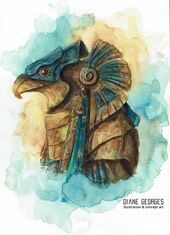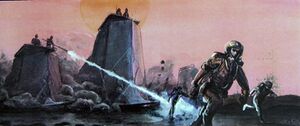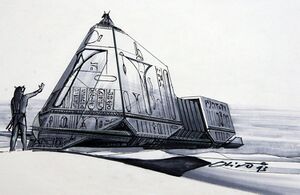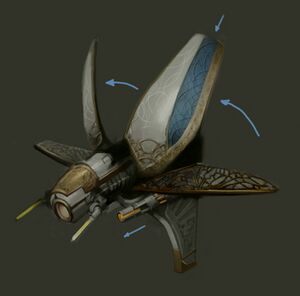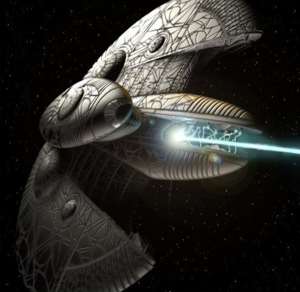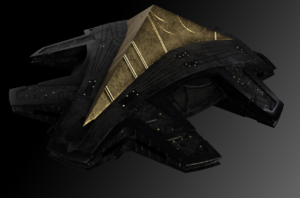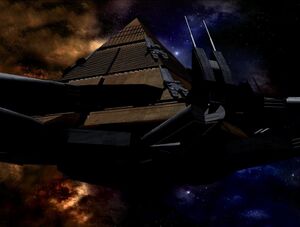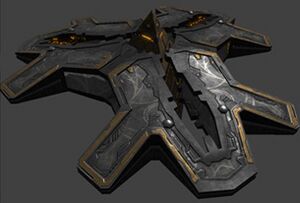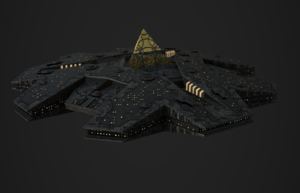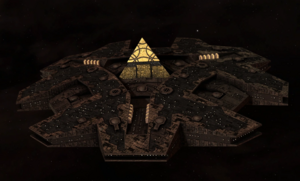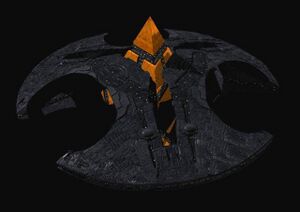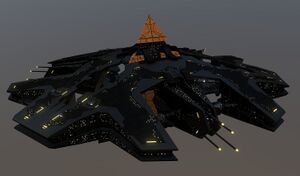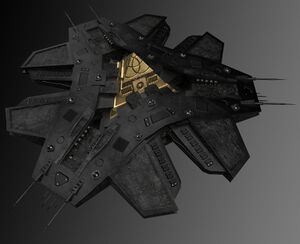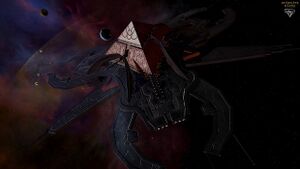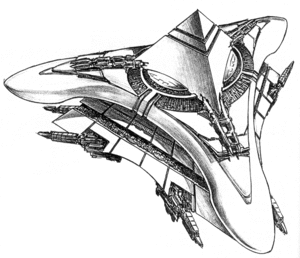Atumite Military Reforms
Background
As part of the project called The Flowering, by those familiar with it, the supreme overlord of the Hundred Worlds of Atum has created a significant military build-up in recent years. Spurred on by the longstanding war against an aggressive species called the Wraith in the Pegasus galaxy, these reforms have consisted of comprehensive design and deployment of many types of of potent new weapons.
The details of this arms buildup are largely unknown to the Milky Way galaxy, and most serious tests have been against local enemies within the Messier 15 Galactic Cluster or in the Pegasus Galaxy, with much of the Atumite domain still relying on older generations of goa’uld technology and un-reformed legions.
A substantial driving force of these reforms has been the recent increase in intellectual capital of the Hundred Worlds, which has drastically increased the population of the goa’uld species, as well as the alliance of with a number of foreign cultures, such as the Bedrosians, Travelers, Vanir, Athosians and others, challenging long-held practices.
Some within the goa’uld hierarchy speculate that the true goal of these reforms is less to fight the wraith, however, and to provide a military capable of defending against increasingly developed and threatening human realms within the Milky Way galaxy.
This page covers some of the most notable elements of these reforms, detailing technologies being produced on Delmak and other industrialized goa’uld worlds.
Totemic Helmets
The totemic helmet of the goa’uld, first popularised by the second dynasty and used extensively by the imperial house, is one of the most emblematic symbols of Atumite rule. Produced in a wide variety of forms, the armies of the Supreme System Lord and his immediate retainers are required to provide these devices for their troops. Some goa’uld domains have historically made limited versions of these, or reserved them for elite troops, but these were one of the first priorities of the Atumite armaments regime.
The current procurement requirement for these helms requires a neural interface that allows the wearer to see through the eyes of the helmet without the risk of flash or strobe weapons affecting their nerves, an integrated magnification, night-vision/light amplification, and infra-red ability, multi-channel encrypted radios for squad and long range communication, and a filtered air supply with at least twenty minutes internal scrubbing capacity. More sophisticated variants have additional features, such as the ability to extract oxygen from water and energy pattern assessment or pheromone-tracking systems, depending on the specialty of the troops involved and lavishness of their lord.
Staff Weapons
For thousands of years the weapon of the jaffa warrior has largely been unchanged, a staff-weapon following a design of alteran origin using a naquadah power cell to energize a plasma bolt, the staff weapon is deeply entrenched in tradition among the jaffa warrior caste. Although the weapon presents several challenges for use in battle, its imposing nature and the utility of the underlying technology within the staff meant that it was favoured for retention as the main battle arm of the jaffa; incremental improvements have included gyro-stabilization and boresight sighting mechanisms linked to jaffa helms to offset the ergonomic disadvantages of the weapon and while this is not wholly effective compared to a ground-up redesign of the weapon with more stabilization, it has improved accuracy notably.
Notable variations are also now produced, most formidable of these are the $goauld (lit. Lightning scepter) $goauld (lit. barrage staff) enhanced blast-staves which produce a sustained beam of energy, fulfilling the role of a squad automatic weapon, these staves use an enhanced energy creation channel that is considerably more robust than the standard and additional power cells that cycle, containing five times as many naquadah power cells as the standard staff.
The weapons in use by the Atumite New Army also include $goauld (lit. Blast-Spear) enhanced melee staves, some of which generate intense kinetic fields on a strike, while others are surrounded by a power field that can melt metal or burst rock, allowing them to be used as potent stabbing weapons. These are popular favorites with the troops, and designed at the request of troops engaged in regular battle with the physically fearsome wraith.
Others include $goauld (lit. thunderclap staves) that generate a sonic blast that shreds the senses of enemies, these weapons are used only with the aural buffers in jaffa helmets and are used as a weapon for shock troops, these weapons are not strictly a new development, but they have been brought into more regular use in the wraith conflict.
Most feared and least desired among the soldiers of Atum are $goauld (lit. Curse-staves), which generate a pulse of radiation that can kill a target immediately within their line of fire but also in glancing or near hits result in radiation poisoning, designed as a weapon of particular cruelty these are chiefly valued for their ability to counteract the remarkable resilience of wraith soldiers who can heal conventional burns quickly, but are a simple to produce offshoot of energy weapons technology.
Armour
The keystone of the Flowering’s military redesign programme is an ambitious project to equip the most loyal corps of jaffa warriors with powered armour, that enhances physical strength and provides complete protection against the elements. Created initially on Delmak at the personal orders of the Supreme System Lord, this project was difficult until greatly shortened with the alliance of the Vanir of the pegasus galaxy and the launch of the Discovery Expedition, both of whose use of mid-Alteran designed armoured exoskeletons provided a substantial impetus. Powered by a compact power cell, this armour greatly enhances the wearer’s physical abilities, and can project a force-barrier which provides resistance against smallarms, usually by the gesture-control of a gesture mimicking raising a shield.
This model of power armour most commonly used used by the Atumites is known as Heru-Nubet armour, translating to both 'Horus of Gold' and 'Horus Triumphant.'
Ground vehicles
The biggest departure from goa’uld orthodoxy in the New Programme is the procurement of dedicated ground-combat vehicles. The Atumite domain remains the most significant goa’uld polity with the possible exception of the domain of Ba'al, and their operatives have studied the techniques used by rival states in battle.
Two key vehicles were chosen as the most important required vehicles, though others also exist, they correspond to widely known definitions of Infantry Fighting Vehicles and Tanks, though the Atumites have largely taken to using the Imerian terminology in translation, calling tanks ‘Armoured Track Layers’ and Fighting Vehicles ‘Tracklayer-Carriers.’ The fact that these vehicles have no capacity to lay any sort of railway track is apparently no barrier to this nomenclature.
Both types of vehicles contain core similarities, using reactionless drive systems to propel them, allowing various flight profiles in upper and lower atmosphere, naquadah power cells to generate power for their systems, and energy shields to provide a protective aura that can deflect most threat-forces weapons, and a single vehicle of either type can easily resist dozens or hundreds of Mode-Terran (”MT”) enemy vehicles indefinitely while inflicting decisive kills in return. Both of these primary combat vehicles are designed to mimic Lantean gate-ships and their largest axis is calibrated to be able to pass through all three designs of stargate thus far discovered by the Atumites.
Khepra
The Khepra type tracklayer is a single ovoid shell with an energy projector similar to a staff weapon mounted in a solar dish on the forward part of the vehicle, this requires it to rotate to target anything outside of a cone in its forward arc, but it can accelerate, like most goa’uld vehicles, entirely independently of its actual facing, a feature that has been calibrated particularly in emulation of Menelmacari military technologies which have been extensively studied. The forward part of the Khepra is also equipped with missile launchers, shielded from view in its normal operation by the heavily armoured forward panels, these may be slid back to reveal launchers. These launchers are designed to be future-fitted to be compatible with Lantean drone systems though they use more mundane missiles in their current application as the Atumite domain has not mastered the reproduction of Lantean attack drones. The missiles in current use are optimised for either engagement of beyond-the-horizon threat vehicles or light aircraft, with their primary antagonists being wraith darts.
Chariot
The Chariot type tracklayer-carrier is similar to its more heavily armed cousin, but instead of optimizing its design for shield-dynamics with an ovoid shape, it is built to carry jaffa or kull warriors into combat in safety. The kull-warrior version contains extensive regeneration apparatus to ensure peak performance of these warriors; the Chariot can extend its force-barriers around itself when deploying troops, to protect them from enemy fire. These barriers are normally permeable to allow troops to step through them, but can be ‘hardened’ to become impassable, while, when troops are embarked, operate to allow the Chariot to drive through many barriers and many models feature ‘battering rams,’ as their operators have become quite fond of using the shielded vehicles to enter structures at speed. The Chariot carries less missiles than the Khepra, and is studded with several automated weapons that can attack assilants on all sides.
Drones
A reaction to encountering automated drones used by the Wraith, the goa’uld have sought their own answer to this crucial advantage, and several designs of automated escort have been deployed, named hawks or scarabs, they are intentionally given some degree of animal behaviour to facilitate bonding with the troops they support, who react more positively due to drones with relate-able characteristics. Primarily armed with anti-infantry weapons, goa’uld drones are rarely deployed alone, but instead used as a force-multiplier, there are no plans to replace organic soldiers with machines, however, though. Drones typically carry light shields and are used in scouting and patrol duties.
Chepher
The Chepher class scarab drone is a favourite, from its initial testing on prisoners on the dungeon-world of Sheol the Chepher has become a favourite of all the jaffa with whom it has served. Approximately as intelligent as a beagle, the Chepher is aggressively interested in hunting down those against whom it is sent and can understand gestural and verbal commands to a high degree, allowing it to be used seamlessly. Comprising an anti-gravity motive system and a light personal defence shield the Chepher is able to greatly increase troop survivability in hostile urban environments, its turtle-like 'head' gives it the ability to peer around corners and utilize cover intelligently to defend itself while still being able to fire on enemies.
Starships
Attack Ships
Kel'kesh
The Kel'kesh is by far the most daring of the new vessels created under the Atumite domain, at least in the bravery required of its pilots, it is an attempt at the solution to the age-old problem of how to make a smaller vessel a threat to a capital ship. A sizeable disk shaped vessel that mounts a pod on its back which contains its spartan cockpit for three crew, it is hyperdrive capable and shielded, with some models also having a cloaking capacity; nicknamed the flying staff weapon by some jaffa, the Kel'kesh is in fact a closer derivative of the zat'nik'tel, a weapon that uses a nadion-based subatomic chain reaction to turn matter into neutrino-pulses, having the appearance of turning large quantities of solid matter to nothing; energy shields provide a protection against this, and a shielded vessel with greater power output can defend against one of more Kel'kesh vessels with ease, so for this reason they are equipped with shield frequency modulators and phase-alignment devices, as well as reactionless drives that can pass through the defensive gravitational envelopes of many hostile vessels; the typical attack profile of the Kel'kesh is to commit to a hyperspace jump, or use the extreme acceleration of goa'uld drive systems to attack a target vessel from within its shield envelope; closer shield envelopes such as those that directly conform to the surface of the vessel provide a better defence against this vessel, and of course point defense weapons and fighter-screens work perfectly adequately to intercept it, which has caused its first appearances against the Wraith, who do not protect their vessels with energy fields but instead rely on dense armour, to be less than the hard counter that was at one point hoped for, and they are demonstrably dangerous to other goa'uld vessels and others that rely heavily on energetic protections.
The Kel'kesh is also highly dependent on pilot skill, as its systems officer, which is a dedicated role in the three-man crew, must achieve perfect phase alignment for the vessel to pass through a shield, or it is likely to be destroyed by any shield that would ordinarily deflect kinetic attacks during its attack run. Like many other goa'uld vessel advancements, this technology is derived from the Lanteans, via the Vanir.
Jan'tak
The Jan'tak is another creation of the Atumite Domain created at the personal command of the Sole Lord, while most know it as a heavy bomber, its most common use is as a patrol ship, there is relatively little unique technology in its spaceframe, instead it is designed to be produced cheaply and in numbers; it bears the livery of a mothership but is smaller, only a hundred and fifty meters in length. Like the Al'kesh it uses an easily produced reaction drive compatible with cloaking technologies; unlike that more common ship the Jan'tak is designated a 'tak' or 'ship' as it is normally not a sub-vessel of a mothership but carries out its own missions.
Its internal bomb bays are much more extensive and can carry a strategic payload; it is rumoured that a fleet of these vessels under the command of fiercely loyal Jackal Guard acts as Atum's final countermeasure against anyone who should destroy Mnewer, carrying potent naquadriah warheads and equipped with long range drive systems and cloaking technologies.
While this is largely a black rumour, better known are the Jan'tak vessels whose bomb bays are removed and are instead equipped to transport ground forces, able to drop out of hyperspace and deploy ground forces to contest a target area, including "tracklayer" ground vehicle support.
Capital Ships
Hak'tak
The Hak'tak is not a true mothership but carries armament and shielding superior to them, instead it is designed to fulfil a different goal for though it can carry a number of ships and personnel it is in fact wholly automated, built around a central crystal core that can contain the conciousness of one or more systems operators, whom the ship becomes the body of. The first of the class was based around the venerable jaffa master Pen'tar's conciousness, and it contains within its interior the mortuary temple of this legendary figure also, but the uploaded mind of its pilot continues to operate this mausoleum-warship. Designed to require no fuel, instead integrating a less efficient form of star-siphoning technology it is an alternative vision of naval operations and one that is kept secret in its extent and abilities from the majority of goa'uld, instead these vessels are built as a tool to intimidate and coerce overlords within the Atumite Domain.
Inspired by an incident in the short-lived Atum-Asgard war where a captive asgard was able to, after being the recipient of a mind-probe, subvert and steal the ha'tak on which she was imprisoned, Lord Thoth considered such a system to be desireable as a way of potentially operating a vessel and once star-skimming technology was uncovered it was inevitable that the system would be applied. The incorruptible nature of the jaffa and the lifespan of the operation core means that these vessels can be relied upon politically, though it is believed that the nature of the prolonged life in the Hak'tak core may still be only a few centuries, and that eventually the minds uploaded to them may need to be replaced, otherwise these vessels are self-sustaining.
Motherships
Hok'tak
The first designed successor to the standard Ha'tak vessels of most goa'uld domains, the Hok'tak's name literally means advanced ship, and it is distinctly future-proofed, designed with a more heavily armoured frame than other vessels it makes up for deficiencies of the design by simply being the same vessel but more, boasting more advanced shields and a more potent reactor, it is becoming the standard vessel of the Atumite domain, used at first as a flotilla flagship, it is now beginning to phase out older vessels; its initial deployment was complicated by two of the initial twelve being stolen by mutinous crews who defected to the tok'atem resistance.
Capable of engaging and defeating a Wraith cruiser in a one-on-one engagement the Hok'tak has seen battle on numerous occasions and has a good reputation among crews for being an updated form of a traditional vessel, and it is expected to be in continuous production for the foreseeable future.
Mel'tak
Of all the variants of the venerable ha'tak motherships, the Mel'tak is by far the most promising, boasting an armament profile substantially greater than its rivals and adding a second support frame one hundred and eighty degrees rotated from the original, containing secondary power generators and drive units, it makes space for six large launch trenches in ventral and dorsal positions, the ship integrates substantial Alteran and Lantean precursor technologies, it also integrates internal arrangements and drive-system geometries from another reactionless-drive capable race, believed by some expert observers to be Cylon in origin; the ship carries an armament greater than three conventional ha'taks even upgraded to the same underlying technologies, and has six silos for the use of Lantean drones, as well as extensive hangars.
It is equipped with an intergalactic hyperdrive, but all tests for this system have thus far showed that while the technology works its stabilization programs are as yet poorly understood, with two experimental vessels having torn themselves to pieces in hyperspace, and another having failed in its deceleration cycle causing it to plunge through the heart of a star at sixty percent light-speed, rendering the (fortunately unpopulated) destination system uninhabitable and at least one other having been lost in a distant galaxy.
Despite their hyperdrive problems, the Mel'tak's superior role as an assault ship and carrier capable of successfully engaging and defeating most projected hostile vessels has caused it to win the favour of the Supreme Lord, as its hyperdrives can still operate without significant irregularities approaching speeds of half a megalight over distances approaching half the galactic disk, comparing favourably to the pre-Atumite hyperdrives that were only able to function at sustained speeds of thirty two megalights.
Paraherwemenef
The Paraherwemenef-class is amongst the most radical of departures from goa'uld orthodoxy currently in production, designed for no concern other than speed, it is projected to be the fastest ship in the goa'uld arsenal save the current generation of battleships, and unlike most vessels, it does not use a hyperdrive but a close conformal warp-drive similar to early Alteran ships, with the discovery of the relic-vessel Destiny the goa'uld attempted to ambitiously retro-engineer this vessel to integrate this drive system, a project which failed miserably and resulted in one test vessel catapulting itself apart in the outer reaches of the Sebet-Sweru system, and others simply suffering catastrophic systems failure; the highly hull conformal design shape offered some hyperdrive benefits however and the vessel was put into limited production as an advance vessel intended for rapid response duties. Despite its unusual shape it is similar to 'standard' ha'tak vessels in armament and capabilities, and is only notable for being substantially faster than Mel'tak vessels.
Most ha'tak vessels can use docking clamps around their extremities to 'mate' with larger vessels and be enclosed within their hyperdrive fields, such as battlecruisers and citadel ships, although this would normally be grounds to rule out the design as a limitation on logistics, the Paraherwemenef is faster than any potential host vessel so this was not considered an essential feature.
Ha'tel
The Ha'tel is a ship that would not have been designed without the express command of the Sole Lord, a Ha'tak variant without additional defensive or offensive capacities, though integrating the same advances in drive technologies, it is intended not to provide more military power, but instead to perform a quite different task, and one that is stereo-typically rare among goa'uld, a research vessel, it is host to a nest of sensors and probes using Lantean technology, ranging from long range subspace sensors capable of detecting vessels moving in hyperspace from vast distances, to those capable of penetrating many military cloaking technologies, and discerning phase-shifted enemies, since their first construction, Ha'tel vessels have found a home in defensive patrols and exploration missions alike.
Wesir
The Wesir-class is a vessel built on the ha'tak frame but without the usual goals of providing a front line combatant, instead, the Wesir is designed to address a potential deficiency in the Atumite military in operating as an occupation force against heavily settled planets; a key issue is governance, and suppression of surface forces through a means that does not destroy the economic productivity of the planet such as strategic bombardment, and with the history of heavily settled planets revolting against the goa'uld, plus the growing population denstiy of the Hundred Worlds themselves, the Wesir-class has a single goal; to provide a planetary-oversight vessel; its design is such that it carries several key implments to quarantine a planet and suppress a revolt, or force its population's compliance, first and to the Atumites most important of these assets the ship always carries a stargate, of course any ha'tak may carry such a device, but the Wesir particularly uses one to ensure it can be supplied and remain on station indefinitely.
The second of its systems triad is a substantial capacity for signals jamming, interference and sensor operation, the vessels generally carry a planetary repeater constellation of satellites that can be injected into a planet's orbit and combine surveillance capacity with personnel-stunning orbital blasts to target groups of persons on the surface. The ship itself can emit substantial jamming capable of suppressing long range communications and sensor operation across an area up to a continent depending on its altitude.
The final element of its systems are substantial hangar bays, which replace much of its armament capacity, and instead of the twelve heavy guns of most ha'tak vessels it carries fifteen smaller ones, and replaces many of their systems with almost five thousand death-gliders in carousel serving eighteen launch bays, allowing them to be sortied in waves to maintain an ongoing intervention against a population and support a highly active occupation almost indefinitely.
Shu'tak
Twice the size of a Ha'tak and comparable in speed to the latest core series motherships the Shu'tak is designed as a retrieval and expeditionary craft, intended to journey to distant parts of space to retrieve vessels and objects of interest. One of the first of this design was deployed to the Alteran world of Aclateo Valaruth in search of a power module and ancillary technologies, as well as retrieve samples of the plague that had devastated the "old era" of Alteran civilization if intact. This vessel was destroyed with all hands by the Heralds of History during the Crescent Expedition using an Alteran weapons installation on Aclateo Valaruth.
Despite this setback the vessel has been considered a success and six are located in the Milky Way Galaxy at roughly equidistant points around the galactic core to be able to reach any point in the galactic disc with less than twenty five thousand light years to travel. Others are kept in the Hundred Worlds to perform fleet salvage missions.
A major part of the ship's profile is dominated by variable-geometry pylons which are mounted on its spaceframe, these are used as field projectors for gravitational fields, these allow the vessel to extend its drive fields, and accellerate a vessel or structure under tow by applying a uniform accelleration to all elements within it, allowing it to carry entire cities or derelict craft through hyperspace without any stresses upon them. The earliest usage of this technology on an early testbed of the vessel was to relocate the Dakara device and its Pegasus galaxy cousin at the orders of Atum, and the vessel is principally an offshoot of that procurement.
Ships on reaction duty carry a complement of three batallions of fully upgraded jaffa troops along with ground equipment, Al'kesh bombers, Kel'kesh attack craft and other support ships to facilitate ground security, as the probability of meeting hostile forces on missions of this nature is high, however their commanders are generally chosen for their ability to graciously interact with outsiders.
Battleship
The Goa'uld Battleship is believed to be unique to the Hundred Worlds and is a rare honour that cements a System Lord's power as amongst the first rank. While other vessels use advanced technologies or other fleeting advantages, the Battleship's power comes from its enormous size and total reactor output. Its design is nonetheless advanced and all are fitted with advanced technologies, but their colossal miles-wide size means that they can mount a credible battle against as many as two dozen hok'tak vessels at once.
The six enormous main cannons of the battleship are each the length of a hok'tak vessel and each can punch through the shields of such a ship on their first shot and reduce them to shrapnel within seconds, while the secondary battery is scarcely less powerful; a concentrated volley from these vessels can crack the continental crust of an Earthlike planet.
At least six of these vessels are known to exist, but some believe that there may be as many as eight in service; known System Lords who possess such a vessel include Geb, Horus of Edfu, Ptah, Yu, Morrigan and Sokar. Without the Eyes of the Goa'uld it is likely that these vessels are more powerful than the Citadel Ship presently used by the Sole Lord as his flagship and rumours persist of one set aside for his use as a replacement flagship in the event that the superweapon equipped vessel is crippled or destroyed.
Despite their great power, these ships are comparatively slow in hyperspace, with most analysts believing they are only capable of fifty kilolights - a battleship would take almost a year to reach Earth from Mnewer - as the density of their reactors interferes with the formation of subspace fields used by hyperdrives, and only Yu's and Sokar's have ever been seen outside the Hundred Worlds due to their relatively independent domains where they serve as mobile fortresses.

